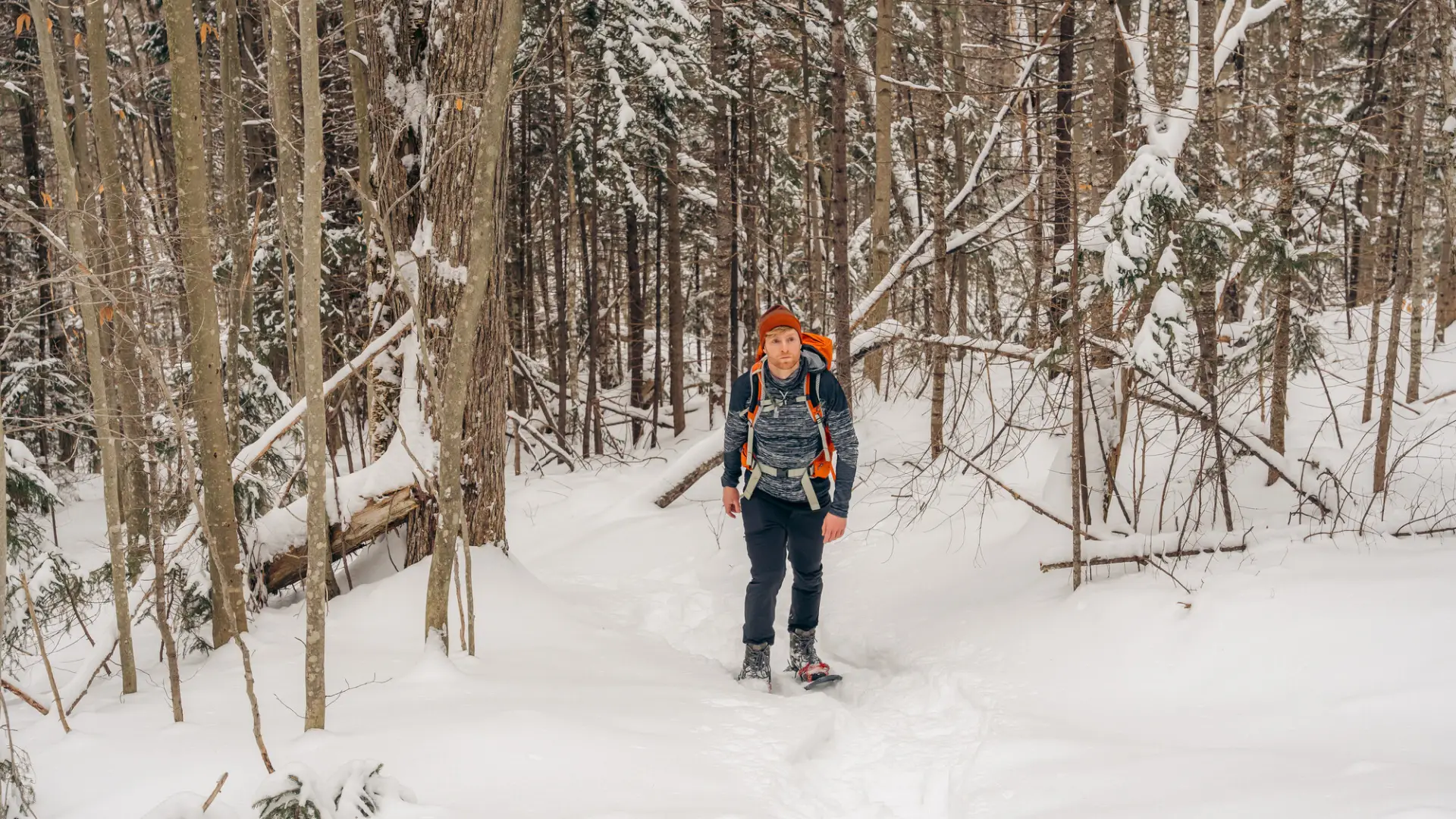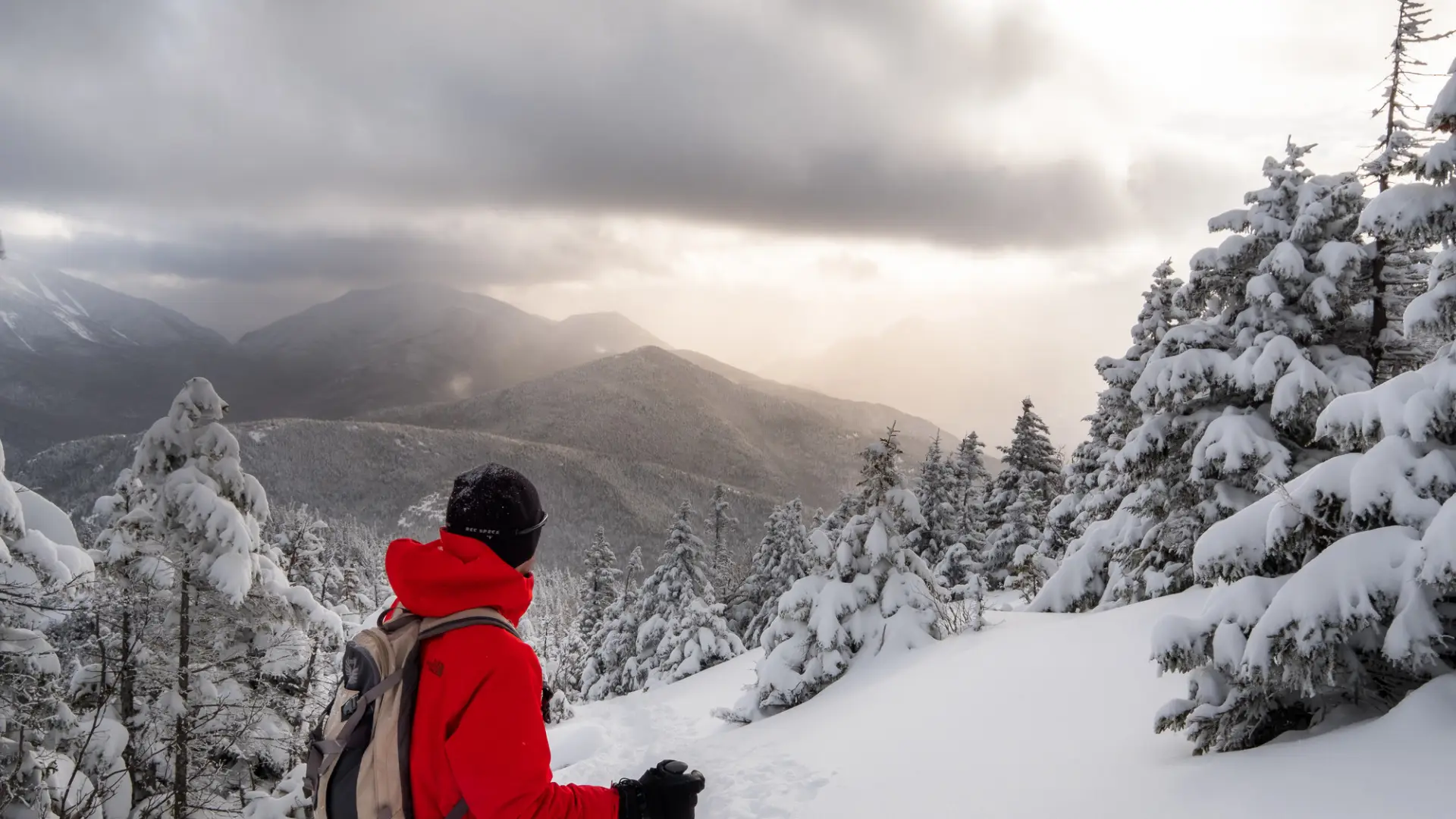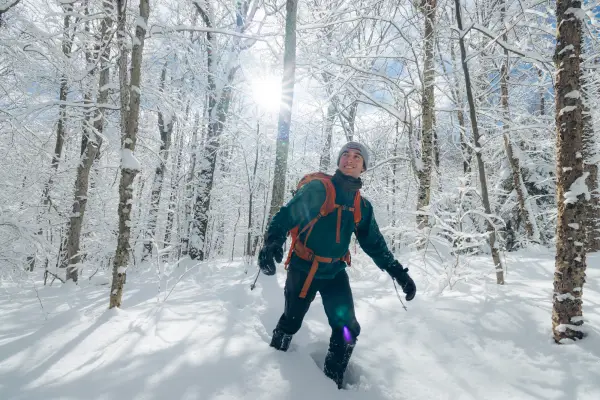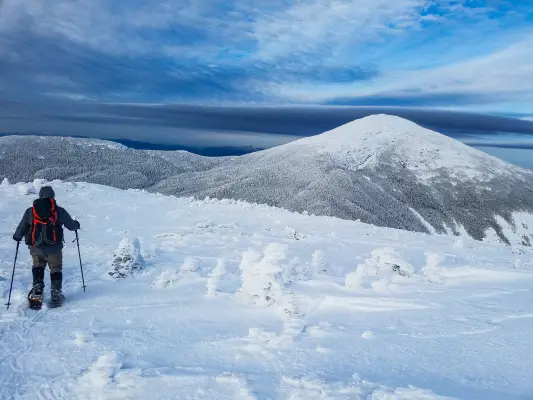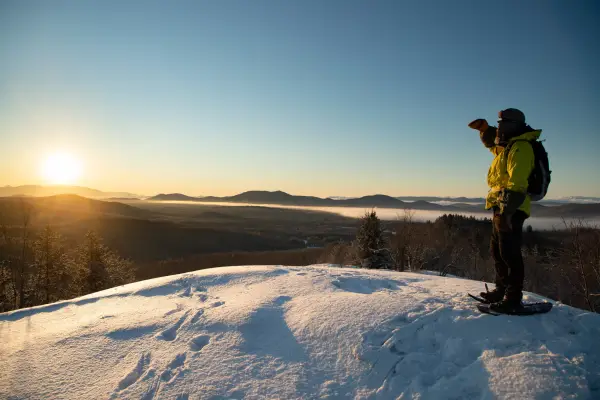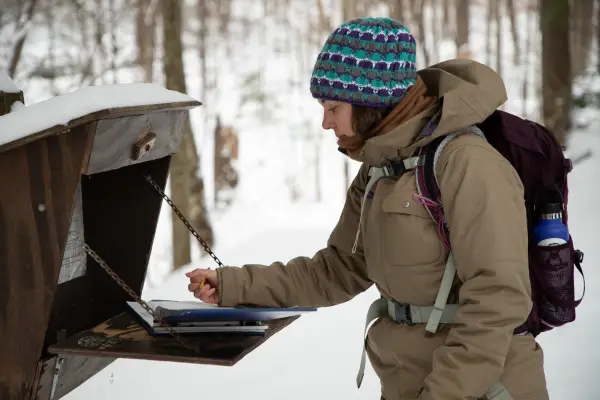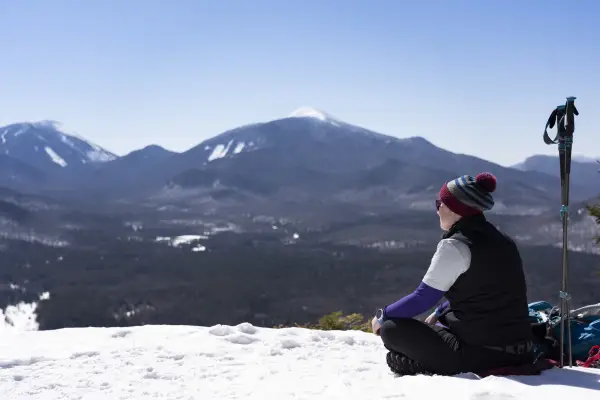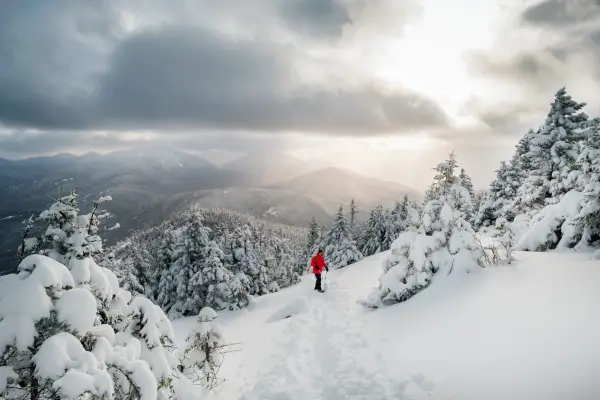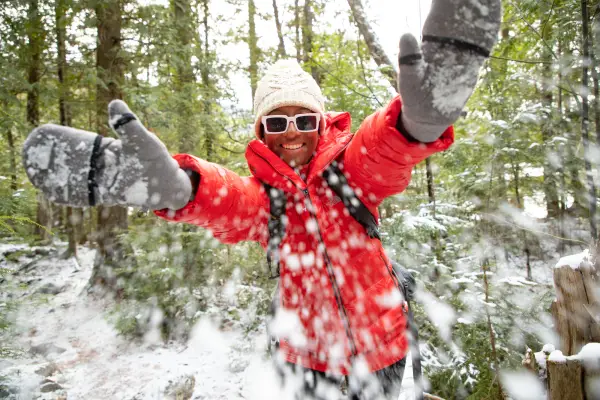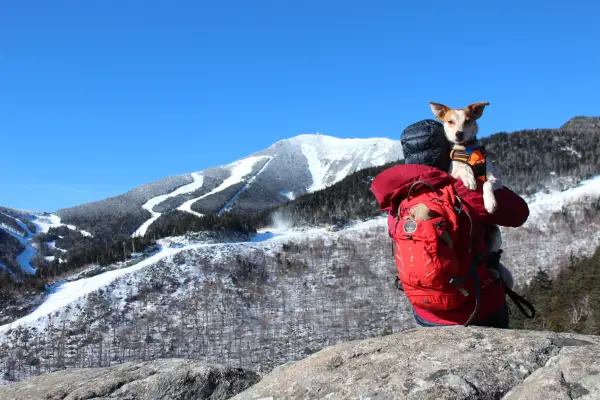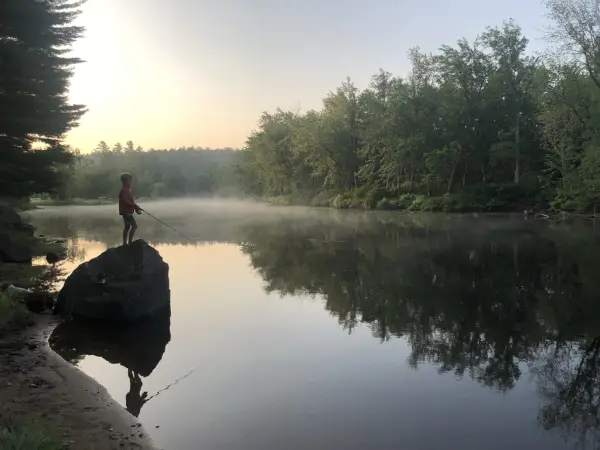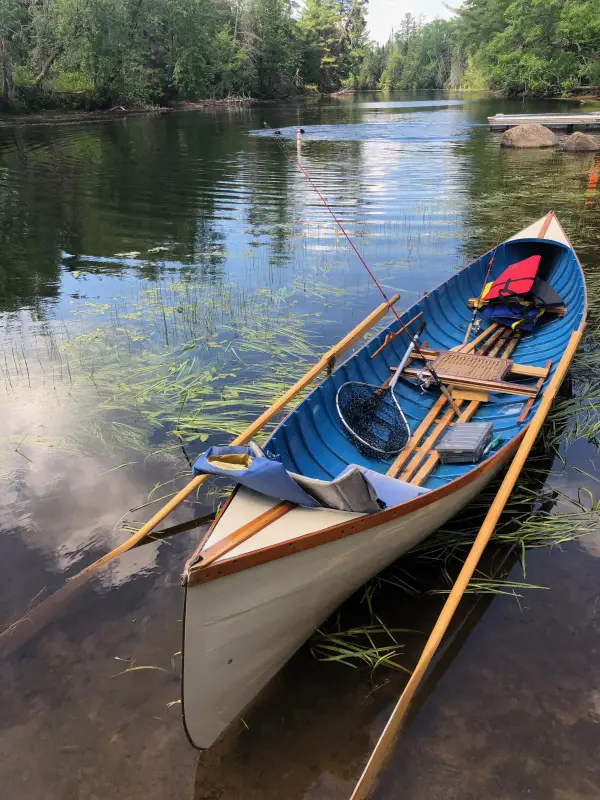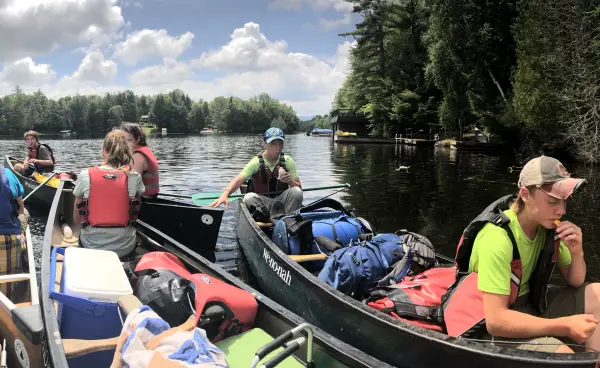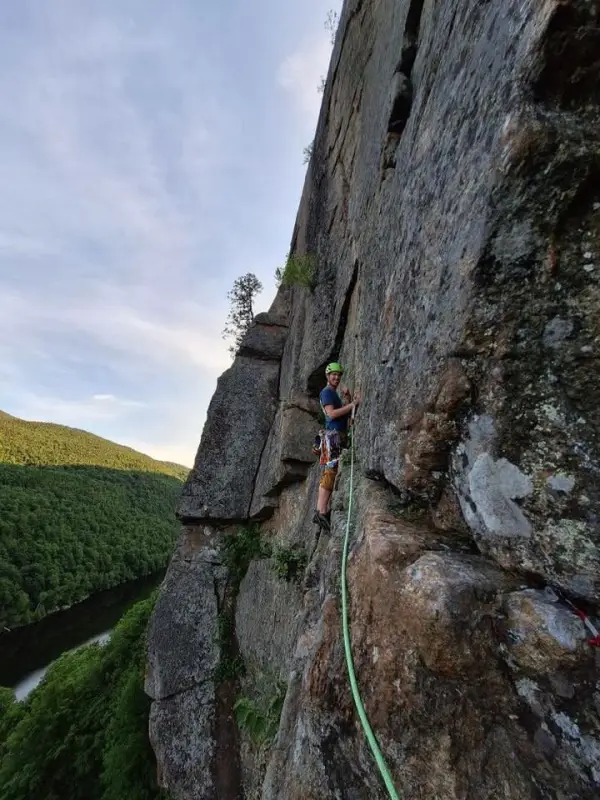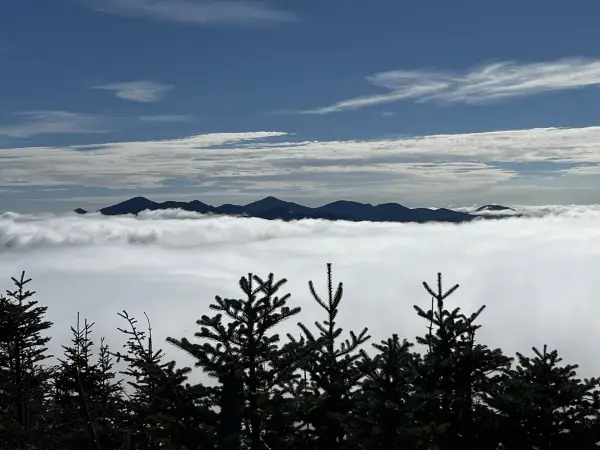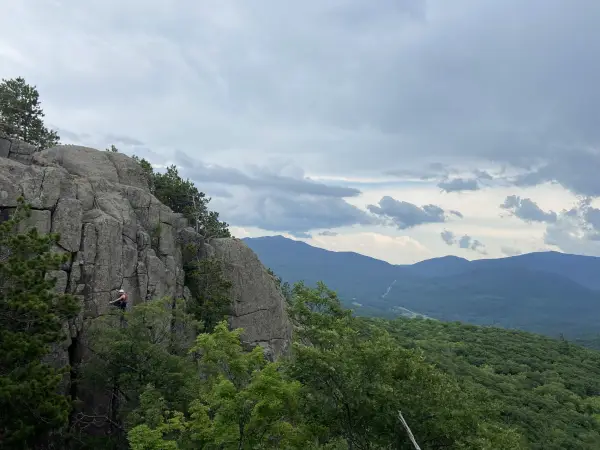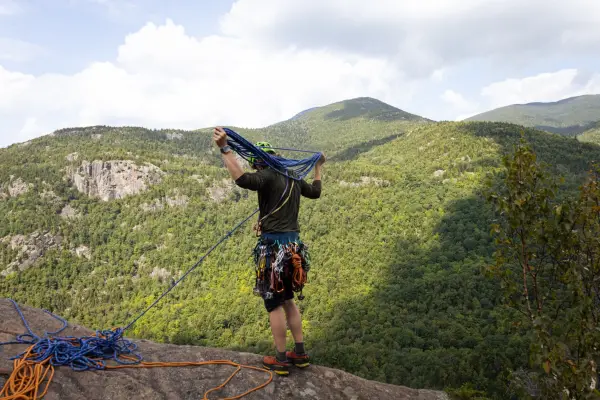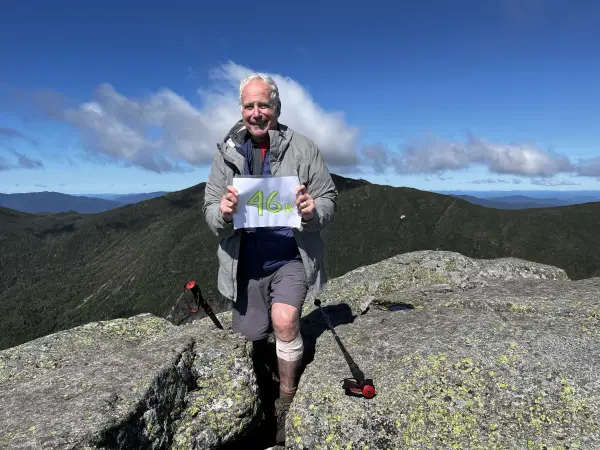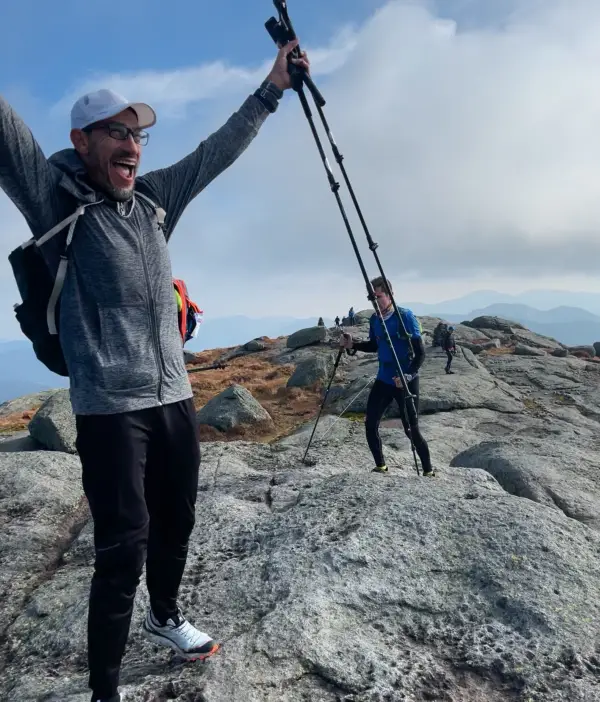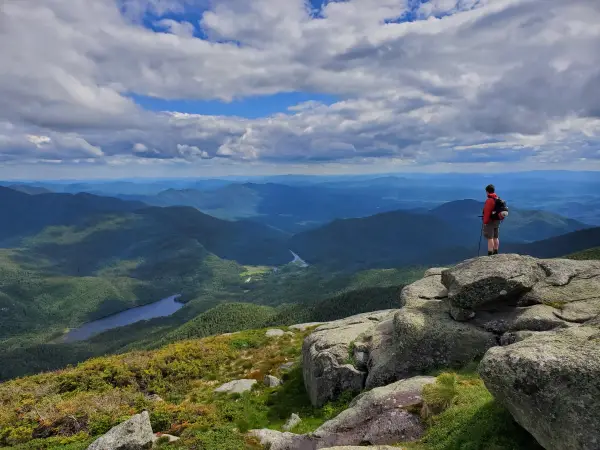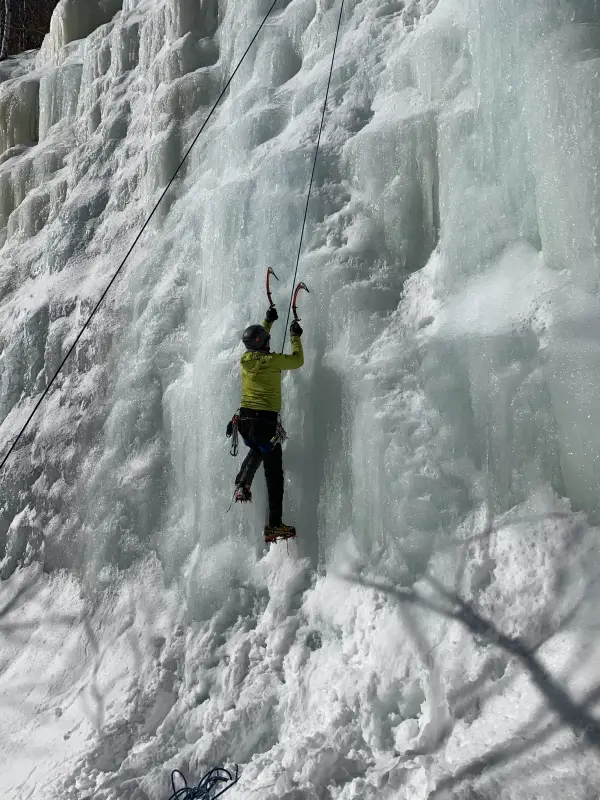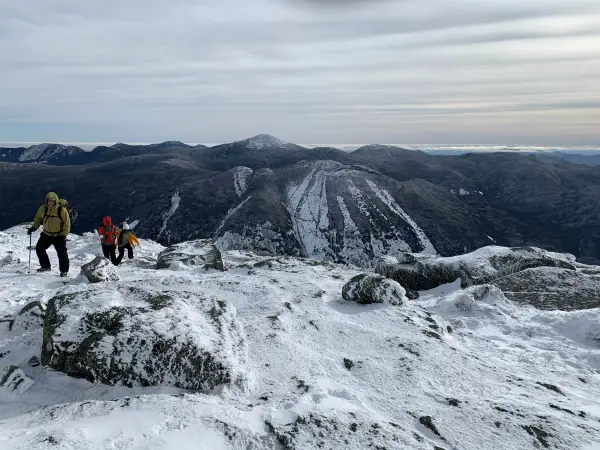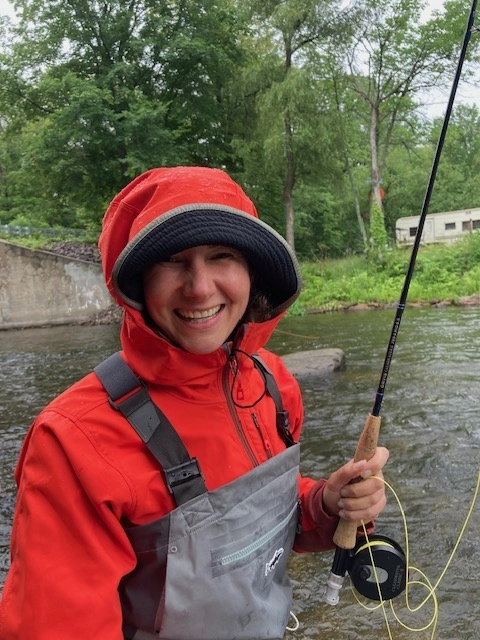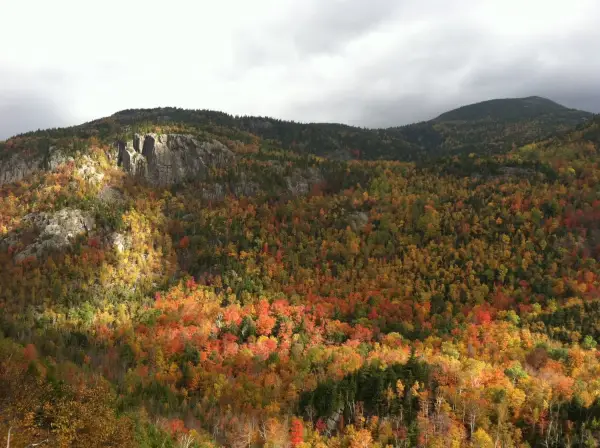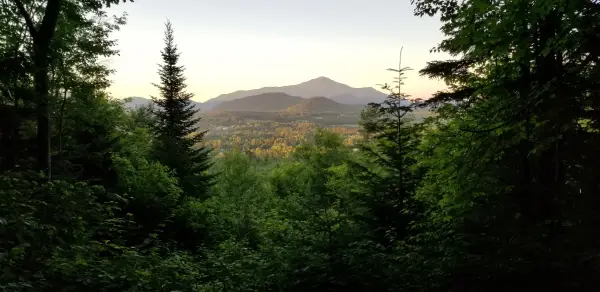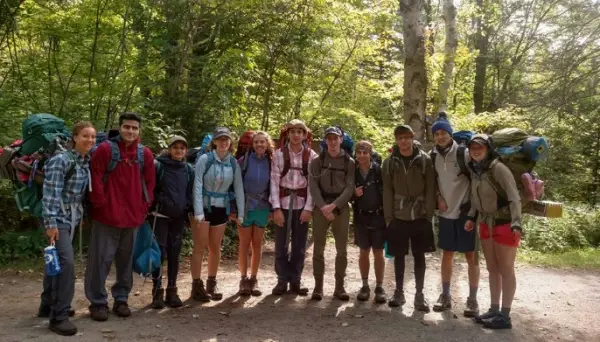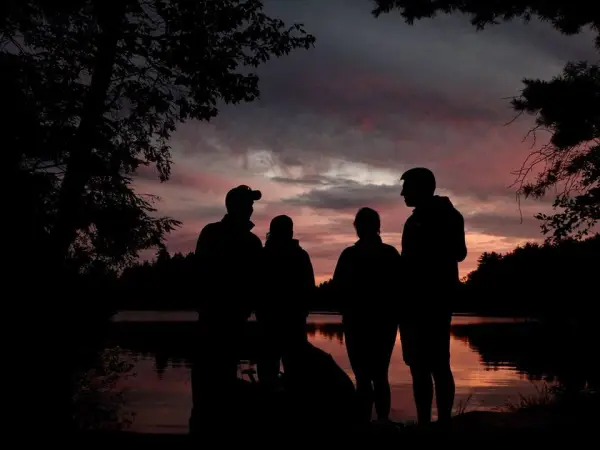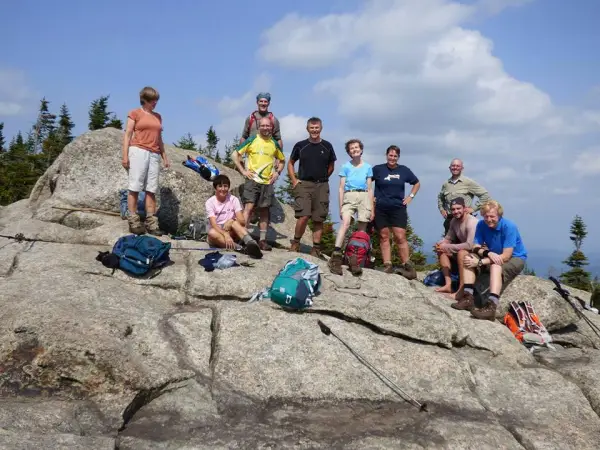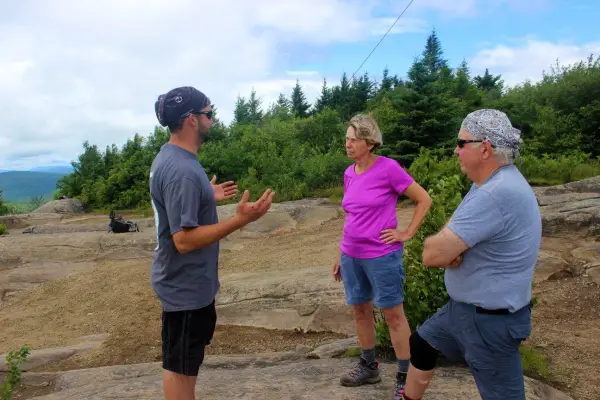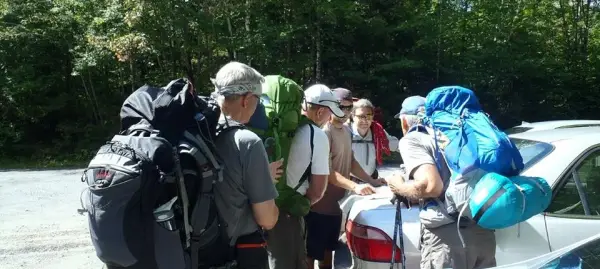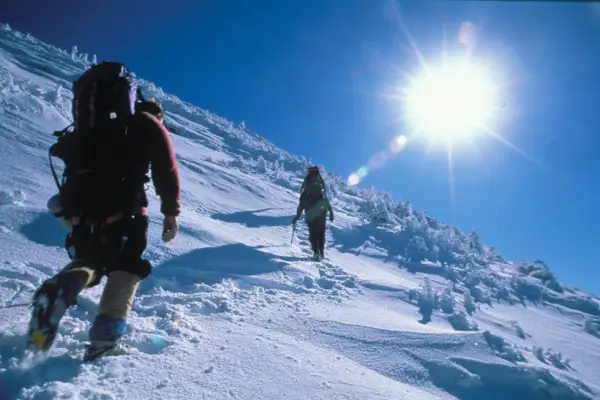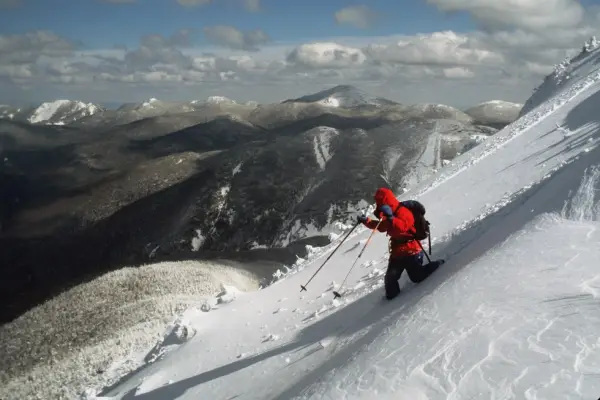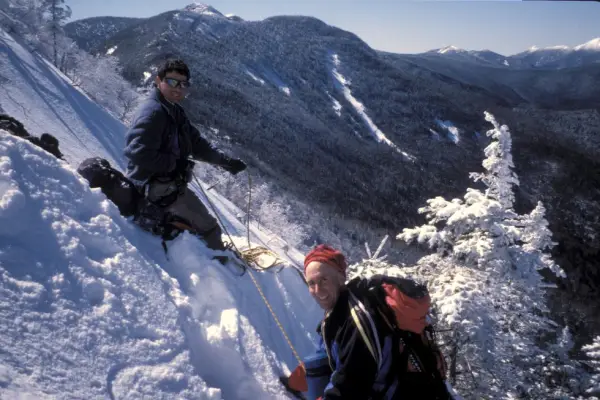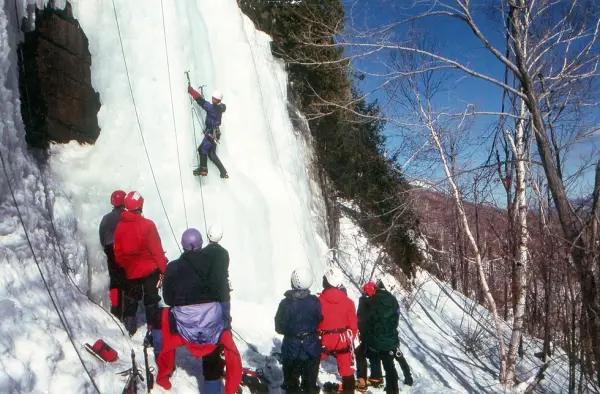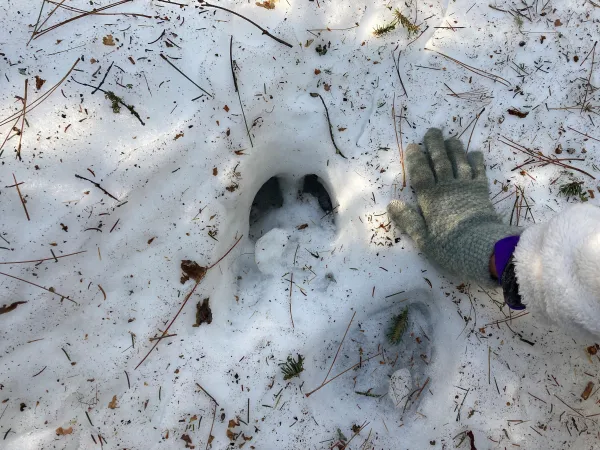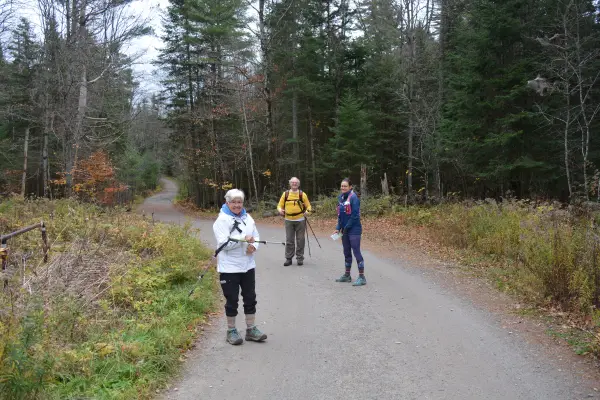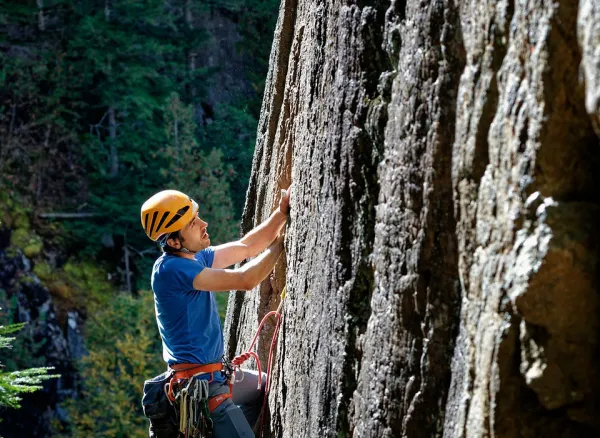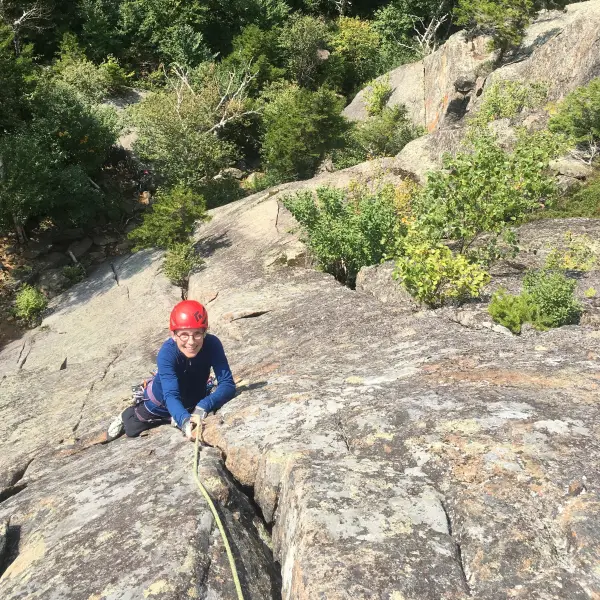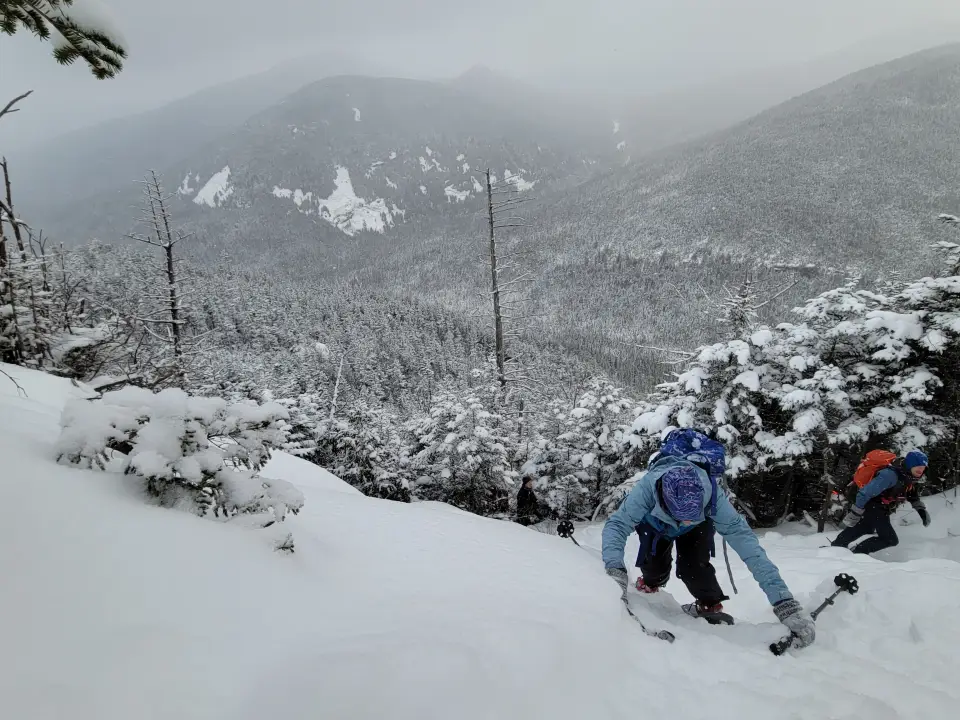
Winter hiking in the Adirondacks can be breathtaking, with crisp blue skies and endless views. But, with chilly weather comes a whole new set of precautions, and it's important to be prepared for your cold weather hike. Once prepared, you can experience a whole new way of hiking.
Be prepared
The essential part of any hike is to be prepared. In winter, this sentiment rings as true as ever. Rapidly changing weather conditions, potentially bitter-cold temperatures at the summit, and the threat of "post-holing" all pose real threats to hiker safety. Supplies like gloves, microspikes, snowshoes, extra layers, a headlamp, and even gear for an unplanned night in the woods, are all vital for a winter hike. When planning, we highly recommend purchasing a guidebook and map, and talking to local experts before setting out on your adventure. With ever-changing weather conditions in the higher elevations, it's important to be prepared and have a plan B. This can mean either choosing a less challenging hike, a hike location with better weather, or finding something entirely different to do that day.
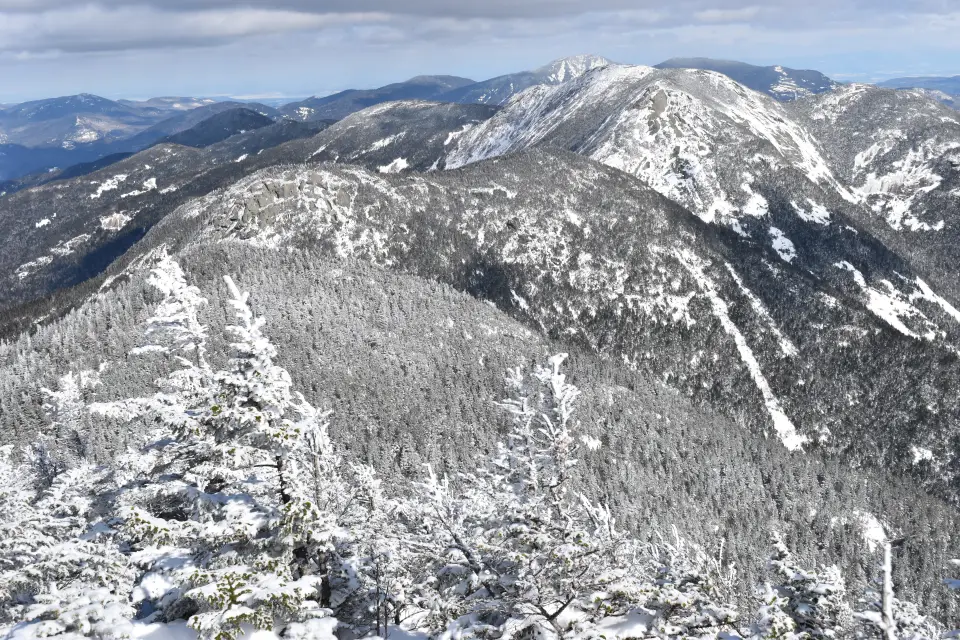
Choosing the right hike
It's especially important that you understand your skill level as a hiker before going on a winter hike. For hikers, Lake Placid and the surrounding area offer plenty of options. If the High Peaks are what you're searching for, then the Lake Placid area can give you that. We reiterate; even in mild weather conditions, these hikes can be challenging and dangerous. For the casual and inexperienced winter hiker, you can build your way up to the winter High Peaks by heading to lower elevation trails like those at John Brown Farm, Heaven Hill, or the Peninsula Trails. For some smaller mountains, check out Cobble Hill, Mt Jo, or Mt Van Hoevenberg.
Frequently asked questions
While the High Peaks Wilderness Area is the only place you are required to bring and wear them (when snow is 8+ inches), you should ALWAYS take them with you during the winter. Just because conditions at lower elevations may not necessitate wearing them, as you hike higher the snow depth can dramatically increase.
In addition to snowshoes, a must-have for winter hikers are microspikes. Do not carry and wear the sort that you would wear for shoveling your driveway, such as nanospikes or YakTraks. You'll want to wear a brand that has large spikes, or even carry crampons on the bigger hikes.
There's no one-size-fits-all for winter hiking. If you're just going for a short walk, a pack big enough for extra layers and some water works fine. For a larger hike, such as one in the High Peaks, a 45-55 liter backpack will fit enough for an unplanned night in the mountains (food, water, clothing, sleeping bag, shelter, etc.).
If you get lost or injured, keep calm and stay put. If you have cell service, call 911 or the DEC Forest Ranger Dispatch, 833-NYS-RANGERS (833-697-7264).
You can visit the ADK High Peaks Information Center or the Cascade Welcome Center for expert information on not only hiking conditions, but also how to go winter hiking.
Outdoor gear stores are abound around town! We've got places like The Mountaineer in Keene Valley, and Eastern Mountain Sports and High Peaks Cyclery in Lake Placid.
